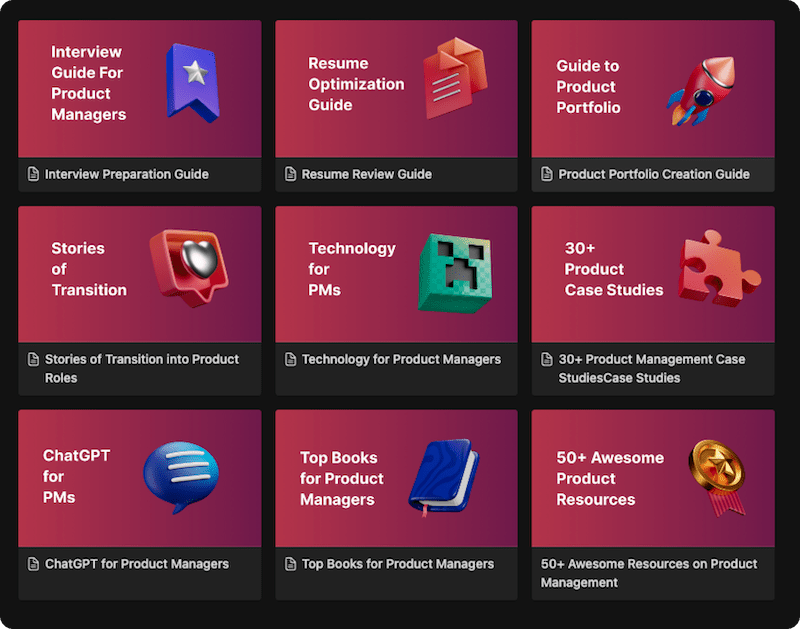Is your app’s churn rate silently climbing? Are your carefully crafted emails and push notifications getting lost in the digital noise, their open rates plummeting? As a product manager or marketer, your greatest challenge is holding a user’s attention. What if you could talk to them at the exact moment they are most engaged, guiding them to that “aha!” moment, introducing a new feature, or nudging them toward a purchase, all without them ever having to leave your app? That is the superpower of in-app messaging.
This isn’t just another communication channel; it’s a direct, contextual conversation with your active users. Forget shouting into the void and start whispering valuable guidance at the perfect time. This guide will take you from a beginner’s understanding to a pro-level mastery of in-app messaging. You’ll learn the strategies, see the examples, and understand the mechanics needed to turn your app from a silent tool into an engaging, interactive experience.
The Rise of In-App Conversations
The origin of in-app messaging is tied directly to the explosion of the mobile app ecosystem in the late 2000s and early 2010s. Initially, communication was dominated by email and the newly introduced push notification. However, marketers and product teams quickly realized the limitations of these channels. Email was asynchronous and often ignored, while push notifications were intrusive and could be easily disabled.
A new need emerged: a way to communicate with users that was less disruptive than a push notification but more immediate and contextual than an email. Early forms were simple pop-up alerts coded directly by developers. But as platforms like Firebase (Google), Braze, Airship, and OneSignal emerged, they provided sophisticated tools that allowed non-technical team members to create, target, trigger, and analyze rich in-app messaging campaigns, turning it from a simple alert system into a core pillar of product growth and user engagement strategy.
Core Benefits & Strategic Use-Cases of In-App Messaging
So, why has in-app messaging become an indispensable tool? Because it directly impacts the metrics that matter most: engagement, conversion, and retention.
- Boosts User Onboarding & Activation: Guide new users through your app’s key features, helping them reach their “aha!” moment faster and reducing first-week churn.
- Drives Feature Adoption: Announce new features to the users most likely to benefit from them, increasing discovery and usage.
- Increases Conversions & Revenue: Nudge users toward a purchase, subscription upgrade, or other valuable action with timely promotions and offers.
- Collects Valuable User Feedback: Deploy targeted surveys, polls, and NPS (Net Promoter Score) prompts to gather contextual feedback without sending users to a separate webpage.
- Reduces Churn: Proactively engage users who show signs of disengaging, offering help or incentives to stay.
- Provides Proactive Support: Offer help or clarification when a user seems stuck on a particular screen or feature, reducing support ticket volume.
The Main Types of In-App Messages (Your Creative Palette)
In-app messages are not one-size-fits-all. Choosing the right format depends entirely on your goal and the urgency of your message.
### 1. Modals (Center-of-Screen Pop-ups)
Modals appear in the center of the screen, dimming the background and demanding the user’s attention. They are best used for critical information that requires a user’s decision before they can proceed.
- Use-Case: Asking for app store ratings, critical permission requests (e.g., location access), or can’t-miss promotional offers.
- Example: A pop-up from your banking app asking you to confirm a new security setting.
### 2. Full-Screen Messages
These take over the entire screen and are the most visually impactful format. They are perfect for rich content, major announcements, or welcoming new users.
- Use-Case: The first screen in a user onboarding flow, announcing a major product redesign, or showcasing a seasonal marketing campaign.
- Example: Spotify showing a full-screen message welcoming you to a new year with your personalized “Wrapped” stats.
### 3. Banners / Slide-ins
These are less intrusive messages that appear at the top or bottom of the screen, delivering information without interrupting the user’s flow.
- Use-Case: Confirming a successful action (“Your profile has been updated!”), alerting users to a minor issue, or offering a subtle tip.
- Example: A small banner in Google Maps that says “You are now in offline mode.”
### 4. Custom & Embedded Messages
These messages are designed to look and feel like a native part of your app’s UI. They are the least intrusive and often the most effective for providing contextual guidance.
- Use-Case: A tooltip pointing to a new button, a small notification badge on a “What’s New” menu item, or a checklist of onboarding tasks embedded on the dashboard.
- Example: Duolingo’s friendly owl character, Duo, appearing next to a lesson with a word of encouragement.
How to Launch Your First In-App Messaging Campaign: A Step-by-Step Guide
Ready to get started? Here’s a practical framework for launching a successful campaign.
- Define a Clear Goal: What do you want to achieve? Don’t just “send a message.” Your goal should be specific and measurable, like “Increase adoption of the ‘new dashboard’ feature by 15% in 30 days.”
- Choose Your Platform & Integrate the SDK: Select an in-app messaging provider like Firebase, Pendo, Userpilot, or Twilio. This will require your development team to install their SDK (Software Development Kit) into your app’s codebase. This is the technical foundation that enables everything else.
- Identify Your Target Audience (Segmentation): Who should receive this message? Sending irrelevant messages is the fastest way to get ignored. Segment your users based on:
- User Attributes: e.g., Free vs. Paid users, New users (signed up < 7 days ago).
- User Behavior: e.g., Users who have used Feature X but not Feature Y, users who haven’t logged in for 14 days.
- Set Your Trigger: When should the message appear? A trigger is the event that causes the message to be displayed.
- Event-Based Trigger: Appears after a user takes a specific action (e.g., completes a level, saves an item for the first time, visits a specific screen 3 times). This is the most powerful and contextual type of trigger.
- Session-Based Trigger: Appears when a user opens the app a certain number of times (e.g., on their 5th session).
- Craft Compelling Content: Design your message with the user in mind.
- Clear Headline: Grab their attention.
- Concise Body: Get straight to the point. What’s in it for them?
- Engaging Visuals: Use images, GIFs, or icons that match your brand.
- Strong Call-to-Action (CTA): What do you want them to do next? Use action-oriented language like “Try it Now,” “Learn More,” or “Claim Your Discount.”
- Measure, Test, and Iterate: Launch your campaign and track its performance. Key metrics include:
- Impressions: How many people saw the message?
- Click-Through Rate (CTR): How many people interacted with the CTA?
- Conversion Rate: How many people completed the desired goal after seeing the message?
- A/B Test different headlines, visuals, and CTAs to continually optimize your results.
In-App Messaging vs. Push Notifications: What’s the Difference?
This is the most common point of confusion. While both are key communication channels, they serve fundamentally different purposes.
| Feature | In-App Messaging | Push Notifications |
| Purpose | Engage & guide users inside the app. | Bring users back to the app. |
| Delivery | Shown only when the user is actively using the app. | Sent to the device’s home screen, regardless of app usage. |
| Format | Rich and flexible (modals, banners, full-screen, custom HTML). | Plain text with limited rich media support (e.g., small image). |
| User Permission | Does not require special opt-in. | Requires explicit user opt-in (on iOS). |
| Primary Goal | Onboarding, feature adoption, conversion, feedback. | Re-engagement, transactional alerts, breaking news. |
In short: Use push notifications to get them in the door. Use in-app messages to give them a great experience once they’re inside.
Common Mistakes to Avoid
An in-app message can delight or annoy. Avoid these common pitfalls:
- Being Too Intrusive: Don’t interrupt a user during a critical task (like a checkout process) with a promotional pop-up.
- Generic, Impersonal Messaging: Sending the same welcome message to a power user and a brand-new user shows you’re not paying attention.
- No Clear Call-to-Action: The user sees your message… now what? If you don’t tell them what to do next, you’ve wasted their attention.
- Ignoring the User Journey: Triggering a “rate our app” request on a user’s very first session is premature and annoying.
- Over-messaging: Bombarding users with too many pop-ups is the fastest way to create “banner blindness” or, worse, cause them to churn.
Conclusion
In-app messaging is no longer a “nice-to-have” feature; it is the conversational layer of your product and a powerful engine for growth. It bridges the gap between a static interface and a dynamic, personalized user experience. By moving beyond generic blasts and embracing contextual, value-driven communication, you can guide users, anticipate their needs, and build a stickier, more engaging product that stands out in a crowded marketplace.
The journey to mastery begins with a single, well-crafted message. Start small. Pick one clear goal—improving your onboarding, announcing one feature, or collecting feedback from one user segment. Use the framework in this guide to build your campaign, measure its impact, and learn from the results. By treating every in-app message as an opportunity for a helpful conversation, you will build stronger relationships with your users and, ultimately, a more successful product.
FAQ’s
In-app messaging refers to targeted messages sent to users while they are actively using a mobile or web application. Unlike push notifications that bring users back to an app, in-app messages are part of the app experience itself, used for things like onboarding new users, announcing features, or asking for feedback.
The core difference is purpose and location. Push notifications are sent to a user’s device home screen to re-engage them and bring them back into the app. In-app messages are delivered inside the app to an already active user to guide their experience, drive actions, and provide contextual information.
No, unlike push notifications (on iOS), in-app messages are part of the app’s content and do not require a separate, system-level permission from the user. This gives them a 100% reach to your active user base.
Great examples include Duolingo’s encouraging messages during a lesson, Spotify’s full-screen announcements for new features like “Wrapped,” Amazon’s subtle banners for special deals, and a fitness app’s modal pop-up celebrating when you’ve hit a new milestone.
Success is measured against the goal you set. Key metrics include the click-through rate (CTR) of your message’s CTA, the conversion rate (how many users completed the desired action), and the impact on broader metrics like feature adoption, user retention, or session length after the campaign.
Learn better with active recall quiz
How well do you know What Is In-App Messaging? Let’s find out with this quick quiz! (just 10 questions)


